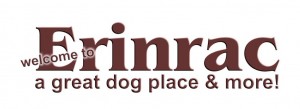Sub-titled The New Judge’s Guide to Dog Showing and the Showring, this book has so much potential and while it does supply a heck of a lot on information I feel it fails it own objectives by the sometimes a scanty approach to topics, sometimes by harping on a point about procedure, sometimes even by the choice of illustration as published. But it is still an excellent book, not just for the new or would-be dog judge but also for the exhibitor who is trying to figure out what makes some of the judges in the dog world tick or at least why they choose the breed representatives they do for the top awards.
I could be labelled as a reviewer of this title as one of the (in the author’s words) ‘self-acclaimed ‘experts’ all ready to give an opinion’ but I write with experience in judging in other fields and as an exhibitor, and a breeder that has been involved in judges’ education.
If you aren’t actually a UK resident, there are many sections you can skip as they relate to UK protocol at the time of publication – going to the last chapter will give you an overview of championship show judging protocol in the UK so if you are blessed with an invitation you can go forearmed with some knowledge. The information for Australia relates to breed championship shows, not as implied all breeds championship shows, which surprises me as I know the author judged at this level in Australia in 1993 (four years before the book was published).
The prose and grammar make for an easy read, and there are plenty of excellent and sage points to take on board.
Any book, as with any dog (‘The dog must be judged as a whole’ p20) is only as good as its whole, and the illustrations, photos and line drawings, but particularly the extra graphics on the drawings, are not as clear so as informative as they could be. For example, parts of the anatomy are confused by the allocation of the graphic lines. Another example, why apparently place your fingers on the top of withers and say to suspend the plumb line from the top of the withers yet there is considerable distance between the fingers & the top of the plumb line. It is things like this that mean the reader needs to pay strict attention and not rely simply on studying the pictures. Also to type, now that is a ‘hairy’ issue anyway, considering the author’s repeated emphasis on judging the dog as a whole, why place so much emphasis on the head and the tail giving type – but read the book and think for yourself – I am sure that is the aim of the book in any case.
Even if you have no desire to judge, but are a keen exhibitor, read the book, it gives important information on show presentation and what the judge is seeing.
Even if you are just interested in breeding and not exhibiting, read the book, in particular the sections on movement/gait; and learn a bit more about your own breed and others.
If you aspire to judge, the good words roll off fairly early, “You, today’s aspiring judge, probably have been associated with one breed and hopefully, you have collected, read and assimilated all the books and other material on that breed. For the potential judge there is no substitute for a good ‘doggy’ library. Borrow or buy all the books you can and read them. Buy a set of standards from The Kennel Club and, taking one group at a time, study the descriptions in depth. You may not wish to judge anything but your own breed, but this cannot be done satisfactorily unless you know about other breeds. You should buy also a good veterinary book containing illustrations of skeletons, muscle formation, and the whereabouts of all the parts, both inside and outside the dog, together with a glossary of terms.” (p12)
The layout is clean and bold, but as a reader I found it distracting to have sections embedded within a chapter, but for later reference these sections are colour coded for easy access. The book itself is magnificently bound in a really solid hard cover, and all the pages are of equal quality, making it easy to use.
Published by Kingdom Books in 1997 (UK) under the TFH Kingdom monogram.
